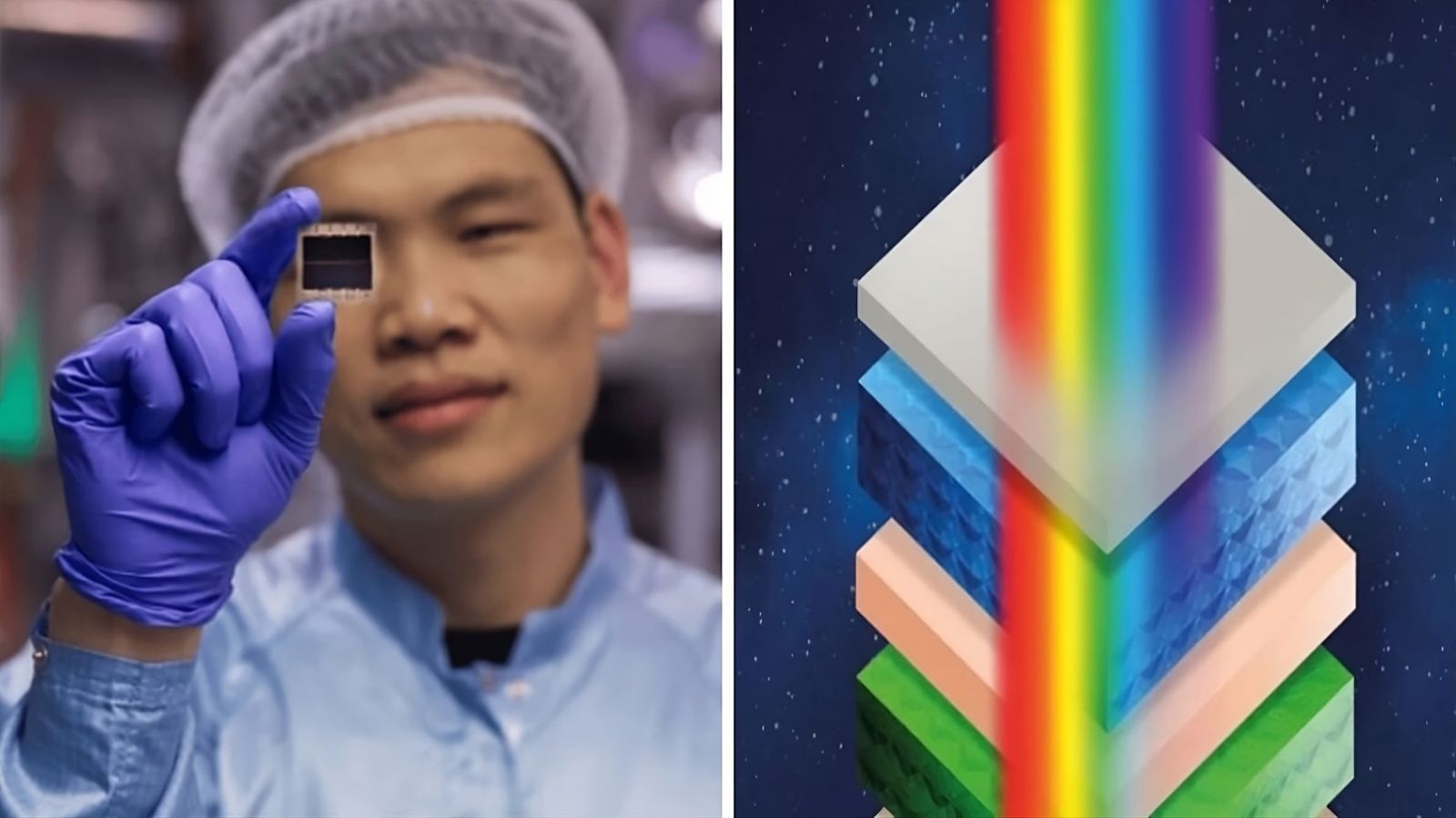These solar cells are so thin they can stick to anything
Published by Cédric,
Article Author: Cédric DEPOND
Source: University of Oxford
Other Languages: FR, DE, ES, PT
Article Author: Cédric DEPOND
Source: University of Oxford
Other Languages: FR, DE, ES, PT
Follow us on Google News (click on ☆)
At the core of this innovation are ultra-thin, flexible solar cells that can generate energy while adhering to almost any surface. This novel material, just one micron thick, is 150 times thinner than today's silicon solar panels.

This new process uses stacked layers of photosensitive materials to capture a wider range of the light spectrum. This multi-junction approach enables an energy efficiency of over 27%, comparable to the most efficient silicon photovoltaic panels available today.
In less than five years, the efficiency of these cells has quadrupled, reaching levels near the theoretical limit of single-layer solar panels. Researchers believe that with future improvements, this technology could surpass 45% efficiency.
Unlike traditional solar panels, this new material is so flexible that it can be applied to everyday objects such as backpacks, cars, or even mobile phones. This versatility could significantly reduce the need for conventional solar panels and specialized solar farms.
Costs are also set to decline. Since 2010, the cost of solar electricity has dropped by nearly 90%, making solar energy almost three times cheaper than fossil fuels. New technologies like perovskite cells promise to drive these costs down even further.
The commercial potential of this technology is already evident. Oxford PV, a company spun out of Oxford University, has launched a large-scale production line for perovskite solar cells, marking a major step toward commercialization. The future of solar panels may very well depend on innovations like these, bringing solar energy access everywhere, any time.